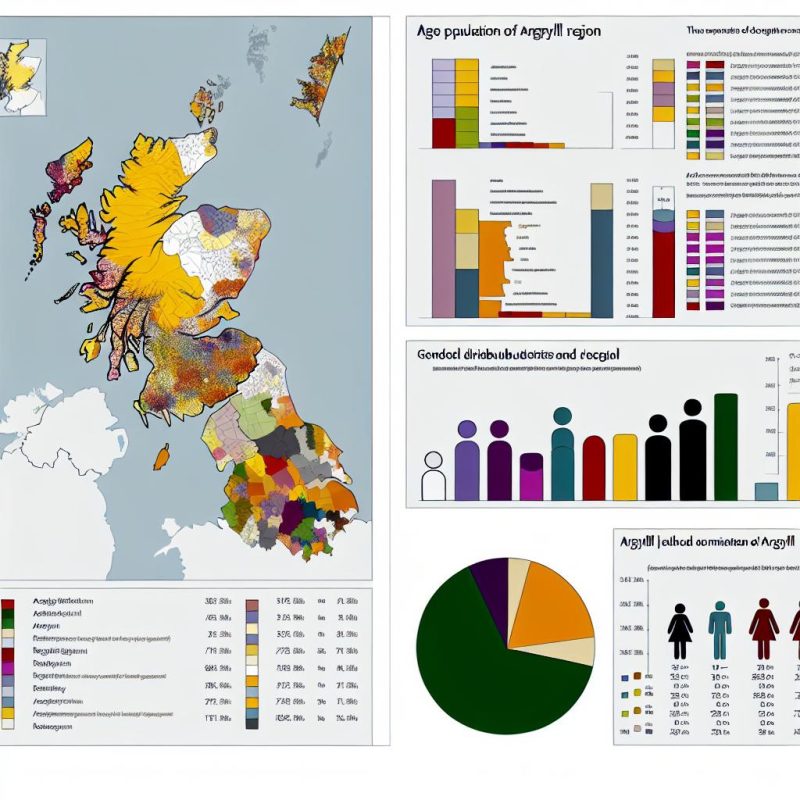Overview of Argyll’s Population and Demographics
Argyll, renowned for its captivating scenery and vibrant cultural legacy, is a distinct region situated in the western part of Scotland. It features an impressive array of landscapes, ranging from rugged, windswept coastlines to verdant, dense forests. Despite its significant geographical size, the population of Argyll remains relatively sparse, especially when compared with the bustling urban centers of Scotland. This article delves into the significant demographic and population characteristics of Argyll, aiming to provide a comprehensive understanding of its unique societal structure.
Population Size and Density
Occupying a substantial land area, Argyll nonetheless maintains a modest population size, which results in a lower population density. The region is predominantly rural, with numerous small towns and villages dotted across its landscape. According to recent population estimates, approximately 85,000 people reside in Argyll. This low density distinctly influences the local economies and the provision of public services, thereby shaping the lifestyle and community interactions within the region.
One of the defining characteristics of Argyll’s population is its geographical spread, which presents both challenges and opportunities. The sparsity requires tailored strategies for service delivery, infrastructural development, and economic activities. Governmental and local bodies need to consider these factors for effective policy-making and regional planning.
Demographic Composition
The demographic composition in Argyll is predominantly comprised of individuals identifying as White. Other ethnic groups, while present, constitute a minor portion of the population. The age distribution is notably skewed towards older age groups, with a substantial segment of the populace being over the age of 65. This aging demographic has significant implications for the region’s healthcare services and broader community planning efforts.
Ensuring adequate healthcare services and facilities for the older demographic is a critical concern. The necessity for more robust healthcare infrastructure and support services geared towards geriatrics becomes increasingly paramount as the population ages. Concurrently, community planning must also focus on creating inclusive environments that cater to an aging populace, promoting active and engaged lifestyles for senior residents.
Language and Identity
English is the predominant language spoken throughout Argyll, although Gaelic retains a historical significance in the area. Indeed, ongoing initiatives aim to revive the Gaelic language as an integral component of Scotland’s cultural heritage. Argyll’s cultural identity is inherently tied to its Celtic roots, vividly expressed through local music, art, and festivals. These elements of cultural expression play a pivotal role in preserving and promoting Argyll’s unique cultural identity.
Scotland’s National Centre for Gaelic Language provides further insights into cultural revival efforts, promoting a deeper understanding of the ongoing initiatives to sustain and celebrate the linguistic heritage of the region.
Economy and Employment
Argyll’s economic landscape is primarily shaped by agriculture, tourism, and fishing—industries typically associated with rural communities. Tourism, in particular, is a vital component of the local economy, drawn by the region’s stunning natural vistas and historically significant sites. Nonetheless, employment opportunities within Argyll can be limited, prompting some younger residents to migrate in search of broader career prospects.
The challenge of retaining the younger workforce is notable, as it impacts the demographic composition and economic sustainability of the region. Local government and businesses may need to explore innovative approaches to attract and retain young professionals. This could include developing sectors such as technology and remote work industries, which are becoming increasingly viable in the modern, connected world.
Impacts of Demographic Trends
The demographic trends prevalent in Argyll pose both challenges and strategic opportunities. The aging population necessitates specific adaptations in healthcare and social services to adequately meet their needs. Moreover, the low population density can influence decisions related to infrastructure and community services. On the other hand, these demographic trends could open avenues for niche tourism opportunities and remote working initiatives, presenting Argyll as a uniquely attractive option in a post-pandemic context.
To effectively navigate these trends, it is essential for stakeholders to engage in proactive planning and policy development. Emphasizing sustainable practices and innovative economic strategies will enable Argyll to leverage its unique attributes to its advantage. Continued research and engagement with resources such as Scotland’s Census are vital for gaining a nuanced understanding of Argyll’s demographic landscape and for crafting informed, forward-thinking policies.

